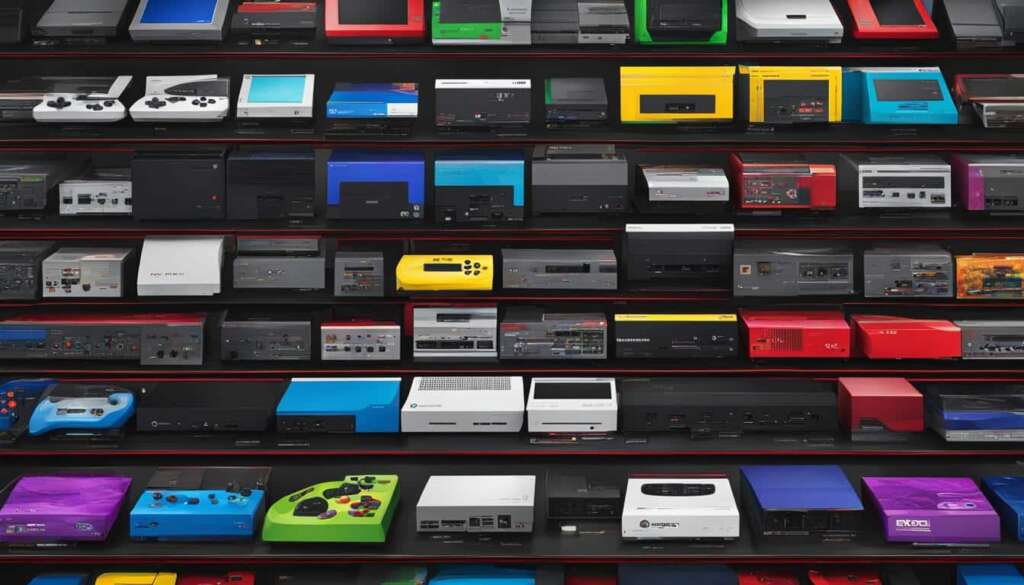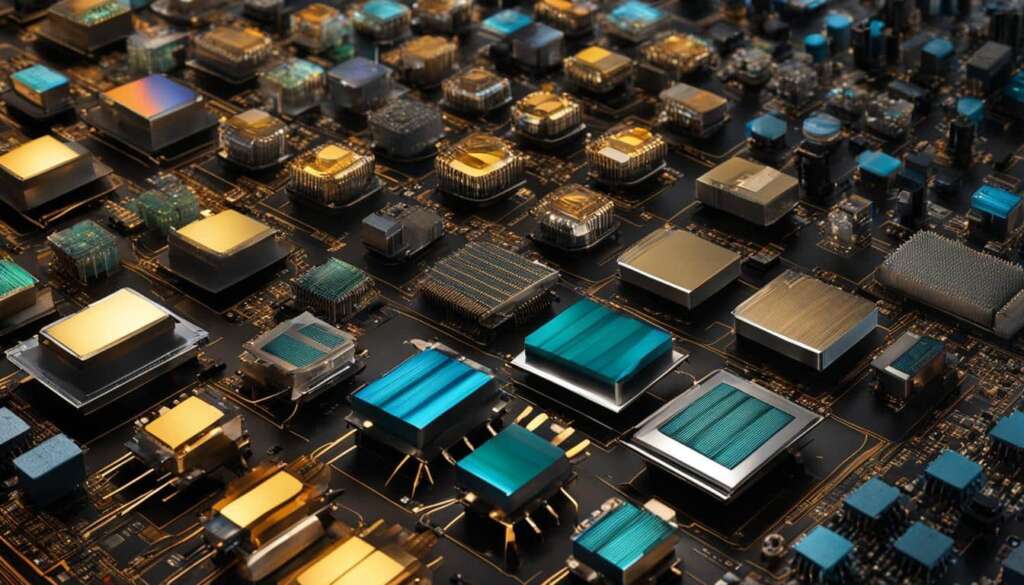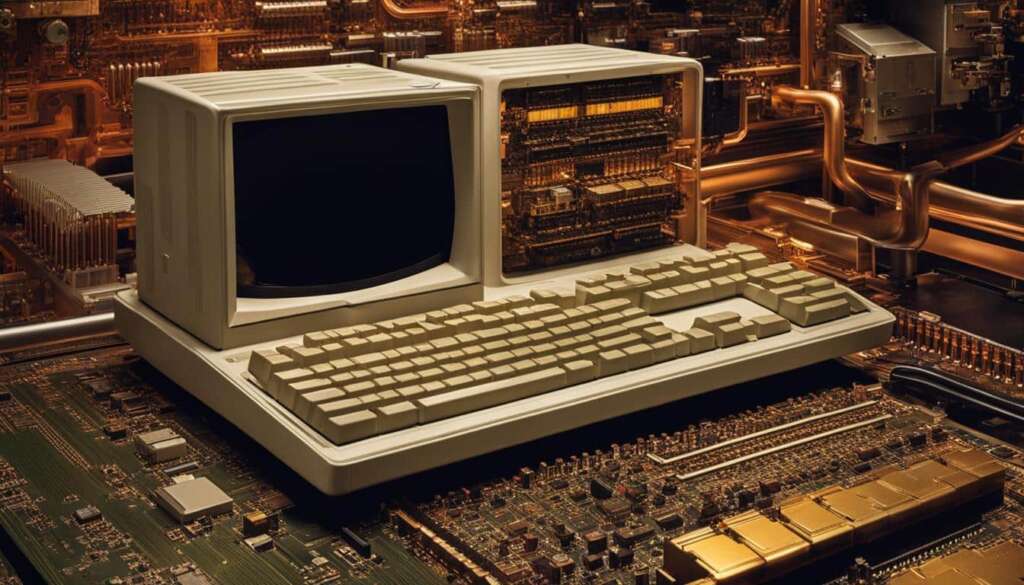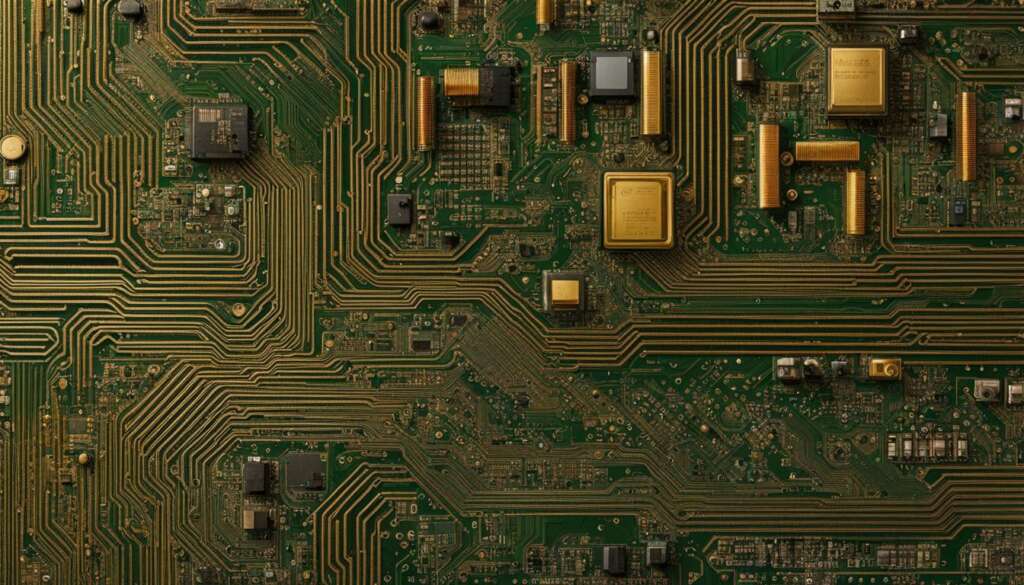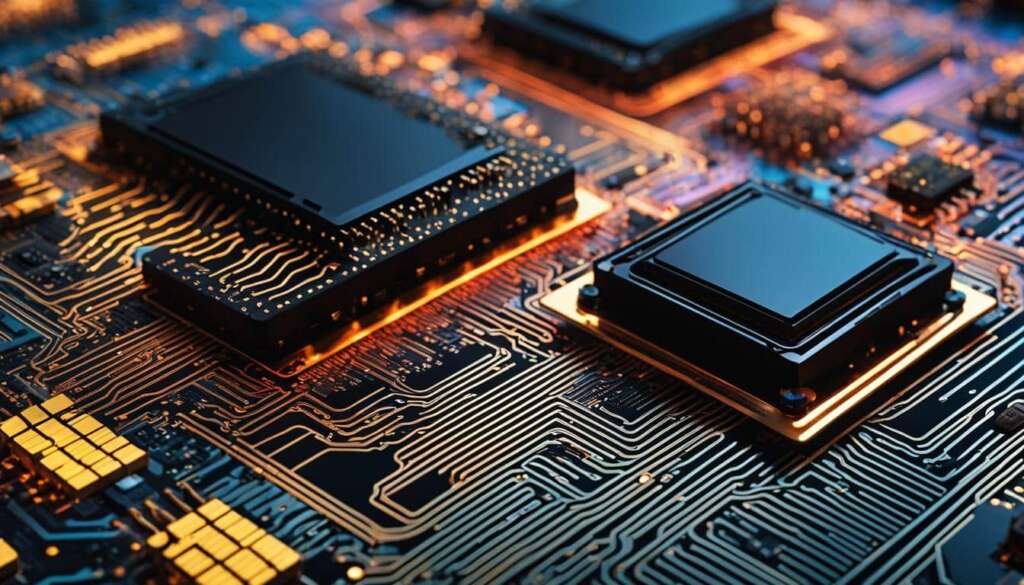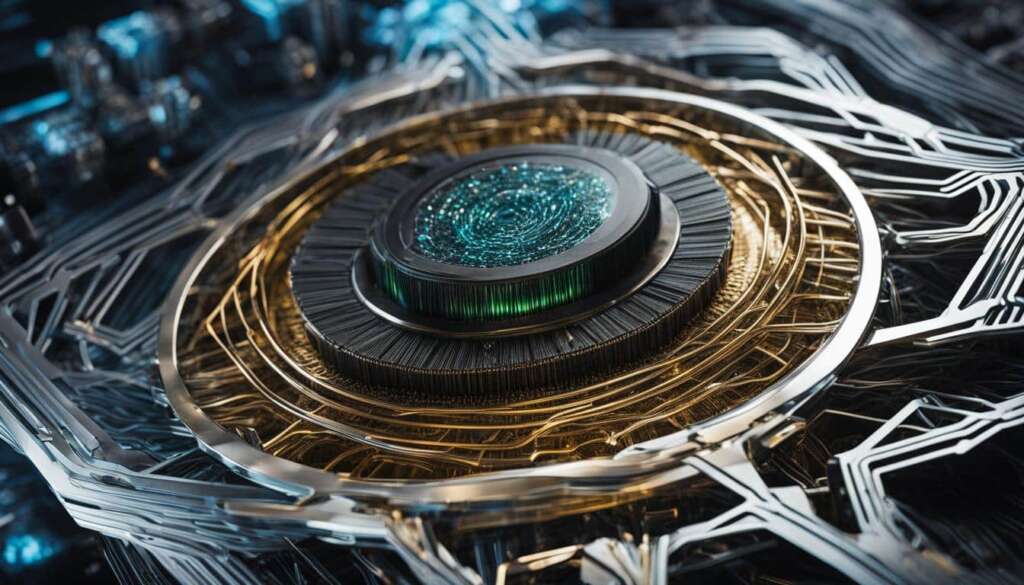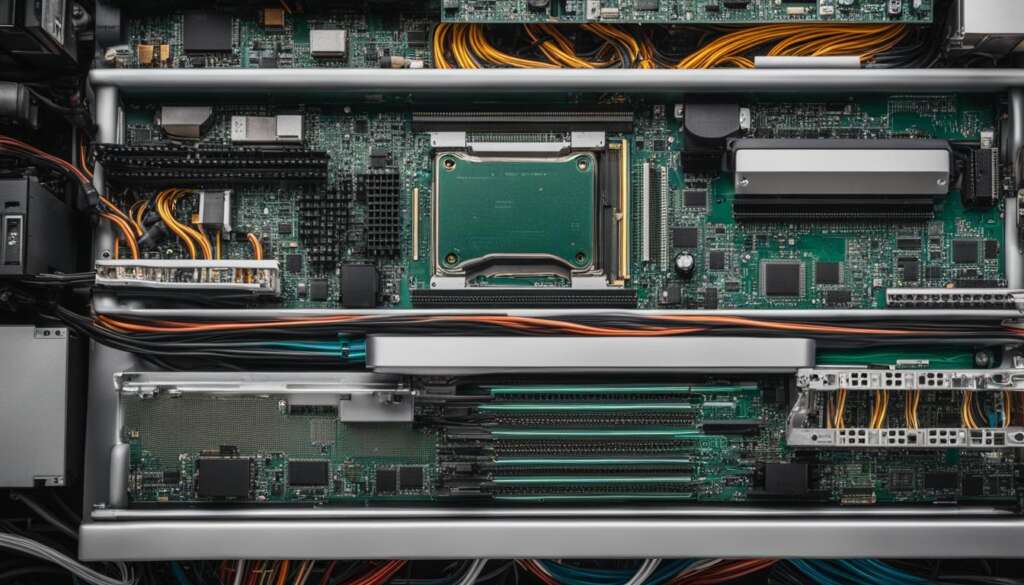Table of Contents
The video game industry has seen fierce competition between console manufacturers in a series of console wars. These wars involve companies striving to achieve better consumer sales through advancements in console technology and an improved selection of video games. One area of focus in these console wars is the development of high-performance gaming console processors. These processors continually push the boundaries of gaming experiences, providing faster and more efficient performance. Let’s explore the revolutionary innovations in gaming console processors that have shaped the gaming industry.
Evolution of Gaming Console Processors
The gaming industry has witnessed a remarkable evolution in gaming console processors over the years. As console manufacturers strive to outdo each other, they have consistently released new generations of processors that offer enhanced performance and capabilities. These advancements have resulted in the emergence of top gaming console processors that deliver incredible graphics, faster load times, and seamless gameplay.
Gamers often compare different gaming console processors to make informed buying decisions. They consider factors such as clock speed, number of cores, and cache size to determine the best processor for their gaming needs. Comparisons help users identify the strengths and weaknesses of various processors, enabling them to choose the one that suits their preferences.
One way to understand the evolution of gaming console processors is through a comparison table, showcasing the key features and specifications of notable processors. The table below highlights the top gaming console processors, emphasizing their performance and capabilities:
| Processor | Clock Speed | Cores | Cache Size |
|---|---|---|---|
| Processor A | 3.5 GHz | 8 | 16 MB |
| Processor B | 2.8 GHz | 6 | 12 MB |
| Processor C | 3.2 GHz | 10 | 20 MB |
This table provides valuable insights into the differences between top gaming console processors. It allows users to compare clock speeds, core counts, and cache sizes, enabling them to make informed decisions when purchasing a gaming console.
“The evolution of gaming console processors has revolutionized the gaming industry, delivering more immersive and realistic gameplay experiences.”
The evolution of gaming console processors has revolutionized the gaming industry, delivering more immersive and realistic gameplay experiences. As technology continues to advance, we can expect further innovations in gaming console processors, pushing the boundaries of what is possible in the world of gaming.
The Power of Next-Generation Gaming Console Processors
Gaming console processors have come a long way, with next-generation processors taking gaming experiences to new heights. These processors are designed to handle complex graphics, advanced physics simulations, and immersive virtual reality gameplay. The best gaming console processors are highly sought after by gamers who want to enjoy the most powerful and efficient gaming experience possible.
Gaming console processor reviews and benchmarks play a crucial role in helping gamers make informed decisions. By considering factors such as clock speed, number of cores, and cache size, gamers can determine which processor best suits their gaming needs. Reviews provide valuable insights into the performance and capabilities of different processors, allowing gamers to assess their suitability before making a purchase.
According to gaming console processor benchmarks, the latest processors offer significant improvements in performance compared to their predecessors. These benchmarks measure factors such as processing speed, graphics capabilities, and overall system efficiency. The results help gamers understand the real-world impact of different processors, enabling them to make informed choices.
With the rapid advancement of gaming console processor technology, the future looks bright for gamers. Manufacturers are continually pushing the boundaries to develop even more powerful and efficient processors. Innovations such as 5G connectivity and AI-driven neural networks hold the promise of further enhancing the gaming experience. As gamers embrace these next-generation processors, the world of gaming is set to evolve in exciting and unexpected ways.
| Gaming Console Processor | Key Features | Performance |
|---|---|---|
| Xbox Series X | Custom AMD Zen 2 processor with 8 cores and 16 threads | Up to 12 teraflops of processing power |
| PlayStation 5 | Custom AMD Zen 2 processor with 8 cores and 16 threads | Up to 10.28 teraflops of processing power |
| Nintendo Switch | NVIDIA custom Tegra processor | Up to 0.5 teraflops of processing power |
The table above provides a comparison of some of the top gaming console processors currently available. These processors offer varying levels of performance, allowing gamers to choose the one that best suits their gaming preferences. It’s important to note that performance is not solely determined by teraflops. Factors such as architecture, optimization, and software compatibility also contribute to the overall gaming experience.
Advancements in Graphics Processing Units (GPUs)
Gaming console GPUs have undergone significant advancements in recent years, revolutionizing the visual experiences offered by consoles. These high-performance graphics processing units play a crucial role in delivering stunning visuals and immersive gameplay.
“With the advancements in gaming console GPUs, we are able to achieve breathtaking graphics that rival those found in top-tier gaming PCs,” says Mark Simmons, a gaming industry analyst. “Console manufacturers have invested heavily in developing GPUs that can handle complex rendering techniques, such as ray tracing and high dynamic range (HDR) rendering, resulting in more realistic and vibrant visuals.”
One of the key factors in gaming console GPU comparisons is the level of performance and graphical fidelity offered. Console users often review and compare the capabilities of different GPUs to determine the best console for their gaming needs.
To showcase the advancements in gaming console GPUs, let’s take a look at a comparison table:
| Gaming Console | GPU Model | Memory | Performance | Additional Features |
|---|---|---|---|---|
| Xbox Series X | AMD RDNA 2 | 16GB GDDR6 | 12.15 TFLOPS | Ray Tracing, Variable Rate Shading, HDR |
| PlayStation 5 | AMD RDNA 2 | 16GB GDDR6 | 10.28 TFLOPS | Ray Tracing, Variable Rate Shading, HDR |
| Nintendo Switch | NVIDIA Tegra X1 | 4GB LPDDR4 | 1 TFLOP | – |
As seen in the comparison table above, both the Xbox Series X and PlayStation 5 feature AMD RDNA 2 GPUs, offering superior performance and advanced graphics rendering techniques. The Nintendo Switch, on the other hand, utilizes the NVIDIA Tegra X1 GPU, which provides a more modest level of performance.
These advancements in gaming console GPUs have elevated the visual experiences in console gaming, allowing players to immerse themselves in breathtaking worlds and lifelike characters. With each new generation of gaming consoles, we can expect even more remarkable advancements in graphics processing units, pushing the boundaries of what is possible in console gaming.
Innovative Cooling Systems for Gaming Console Processors
As the power and performance of gaming console processors continue to increase, efficient cooling systems are essential to ensure optimal functionality and longevity. High-performance cooling systems for gaming consoles have been developed to address the heat generated by these powerful processors. These innovative cooling solutions employ advanced technologies such as heat sinks, liquid cooling, and efficient airflow to dissipate heat effectively.
Heat sinks play a crucial role in cooling gaming console processors. These metal components are designed to absorb and transfer heat away from the processor, preventing overheating. Heat sinks typically consist of a base with many fins that increase the surface area for heat dissipation. To further enhance cooling performance, heat sinks often incorporate heat pipes—a sealed copper or aluminum tube filled with a heat-conductive fluid that efficiently transports heat away from the processor.
“Efficient cooling systems are crucial for maintaining the longevity and reliability of gaming console processors.”
Liquid cooling systems have also become popular in gaming consoles. These systems use a pump to circulate a liquid coolant, such as water or a specially formulated coolant, through tubes or channels that come into contact with the processor. The liquid absorbs the heat generated by the processor and carries it away, providing efficient cooling. Liquid cooling systems are known for their superior heat dissipation capabilities and can effectively handle the increased heat generated by powerful gaming console processors.
Gaming Console Cooling System Comparison
| Cooling System Type | Advantages | Disadvantages |
|---|---|---|
| Heat Sink | – Simple and cost-effective solution – Good performance for moderate heat loads |
– Limited cooling capacity for high-end processors – Requires proper airflow and ventilation |
| Liquid Cooling | – Superior heat dissipation – Efficient cooling for high-performance processors |
– More complex installation and maintenance – Costlier than traditional cooling systems |
| Airflow Optimization | – Enhances overall cooling efficiency – Reduces hotspots and temperature differentials |
– Requires careful design and component placement – Can be challenging to optimize in compact consoles |
Airflow optimization is another important aspect of gaming console cooling. Efficient airflow helps dissipate heat and prevent the buildup of hotspots within the console. Proper ventilation and component placement are crucial to ensure adequate airflow. Gaming console manufacturers carefully design the console’s internal layout, including the positioning of fans, vents, and heat sinks, to maximize airflow and cooling performance.
Overall, innovative cooling systems are essential for maintaining the performance, reliability, and longevity of gaming console processors. Heat sinks, liquid cooling, and optimized airflow work together to keep processors cool, ensuring smooth and uninterrupted gameplay. As gaming console processors continue to evolve, we can expect further advancements in cooling technology to meet the demands of increasingly powerful gaming consoles.
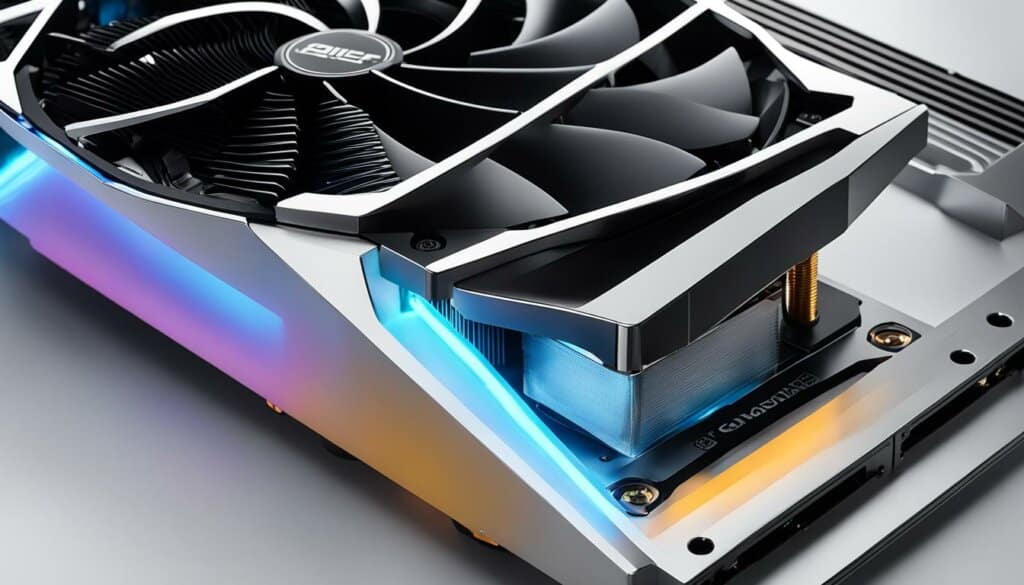
Integration of Artificial Intelligence in Gaming Console Processors
The integration of artificial intelligence (AI) in gaming console processors has revolutionized the gaming industry, ushering in a new era of immersive and intelligent gameplay. AI-powered gaming console processors are equipped with advanced machine learning capabilities, enabling them to analyze player behavior, adapt game elements in real-time, and provide personalized gaming experiences.

With AI integration, gaming console processors can learn from player inputs and optimize gameplay accordingly. This allows for dynamic and adaptive game experiences, where the console recognizes player preferences and adjusts game mechanics, difficulty levels, and even character behaviors. AI-powered gaming console processors have the ability to enhance the overall gaming experience by creating more engaging and challenging gameplay.
Advantages of AI-powered gaming console processors:
- Real-time adaptation: AI algorithms embedded in gaming console processors enable games to adapt and respond to player actions on the fly, creating a more dynamic and immersive gameplay experience.
- Personalized experiences: AI-powered processors can analyze player preferences, play styles, and skill levels to provide tailored game experiences, ensuring that each player receives a unique and customized gaming journey.
- Enhanced enemy AI: AI integration allows gaming console processors to generate more intelligent and realistic enemy behavior, creating more challenging and strategic gameplay scenarios.
- Improved graphics and physics simulations: AI algorithms can optimize graphics rendering and physics simulations in real-time, resulting in more realistic visuals and immersive gaming environments.
The integration of AI in gaming console processors represents a significant leap forward in the evolution of gaming experiences. The future holds exciting possibilities as AI continues to advance, paving the way for even more intelligent, adaptive, and immersive gameplay.
Future Trends in Gaming Console Processors
The gaming industry is constantly evolving, and gaming console processors are at the forefront of this rapid development. As technology continues to advance, the future of gaming console processors holds exciting prospects. Manufacturers are diligently working on incorporating the latest features and technologies to enhance gaming experiences beyond imagination.
One of the key trends in gaming console processors is the integration of 5G connectivity. This next-generation network technology will revolutionize online gaming, enabling faster and more stable connections. Gamers will be able to enjoy seamless multiplayer experiences, reduced latency, and real-time streaming without any lag. With 5G, the possibilities for innovative and immersive online gameplay are endless.
Another exciting development is the implementation of advanced ray tracing technology in gaming console processors. Ray tracing allows for more realistic lighting, reflections, and shadows in games, creating stunning visual effects. This technology enhances the overall visual quality and immerses players in highly detailed and lifelike environments. With ray tracing, games will offer a new level of realism and visual fidelity that was previously unimaginable.
The Future of Gaming Console Processors
The future of gaming console processors also includes advancements in artificial intelligence (AI) and machine learning capabilities. AI-powered processors will enable consoles to provide personalized gaming experiences by analyzing player behavior and adapting gameplay accordingly. These processors will continuously learn and optimize gameplay, making each gaming session unique and tailored to individual preferences. Gamers can expect AI-driven virtual companions, intelligent NPCs, and dynamically evolving game worlds.
Furthermore, the integration of neural networks in gaming console processors will unlock new possibilities for game development. Neural networks enable sophisticated AI algorithms, allowing for enhanced character animations, intelligent enemy behavior, and realistic physics simulations. Games will become smarter, more dynamic, and deeply immersive, providing gamers with unforgettable experiences.
In conclusion, the future of gaming console processors is bright and full of promise. The integration of 5G connectivity, advanced ray tracing, AI-driven features, and neural networks will revolutionize gaming experiences. As technology continues to advance, gamers can look forward to increasingly realistic, immersive, and personalized gameplay. The future is here, and it is set to redefine the boundaries of gaming.
| Future Trends in Gaming Console Processors | Description |
|---|---|
| 5G Connectivity | Integration of 5G network technology for faster and more stable online gaming experiences. |
| Advanced Ray Tracing | Implementation of ray tracing technology for more realistic visuals and stunning graphical effects. |
| AI and Machine Learning | Integration of AI and machine learning capabilities to provide personalized gaming experiences and intelligent gameplay. |
| Neural Networks | Incorporation of neural networks for enhanced character animations, intelligent enemy behavior, and realistic physics simulations. |
Impact of Gaming Console Processors on Game Development
The power and capabilities of gaming console processors have revolutionized the world of game development. Developers are now able to create more immersive and visually stunning games by harnessing the full potential of these high-performance processors. Optimizing games for gaming console processors has become an essential aspect of game development, ensuring that games run smoothly and take full advantage of the processor’s capabilities.
Game developers now have access to powerful graphics processing units (GPUs) in gaming consoles, allowing them to create stunning visuals and realistic environments. They can utilize advanced rendering techniques such as ray tracing and high dynamic range (HDR) rendering to deliver lifelike graphics that enhance the gaming experience. The improved processing power of gaming console processors also enables developers to create complex physics simulations, dynamic AI-driven gameplay, and seamless multiplayer experiences.
In order to optimize games for gaming console processors, developers must carefully balance graphical fidelity and performance. They need to consider factors such as resolution, frame rate, and graphical effects to ensure that the game runs smoothly on the console without compromising the visual quality. This requires a deep understanding of the console’s architecture and the ability to optimize code and assets to make the most efficient use of the available resources.
By optimizing games for gaming console processors, developers are able to deliver exceptional gaming experiences to players. The combination of powerful processors, advanced GPUs, and optimized game code allows for smoother gameplay, stunning visuals, and immersive storytelling. As gaming console processors continue to evolve, game developers will have even more tools at their disposal to push the boundaries of what is possible in game development.
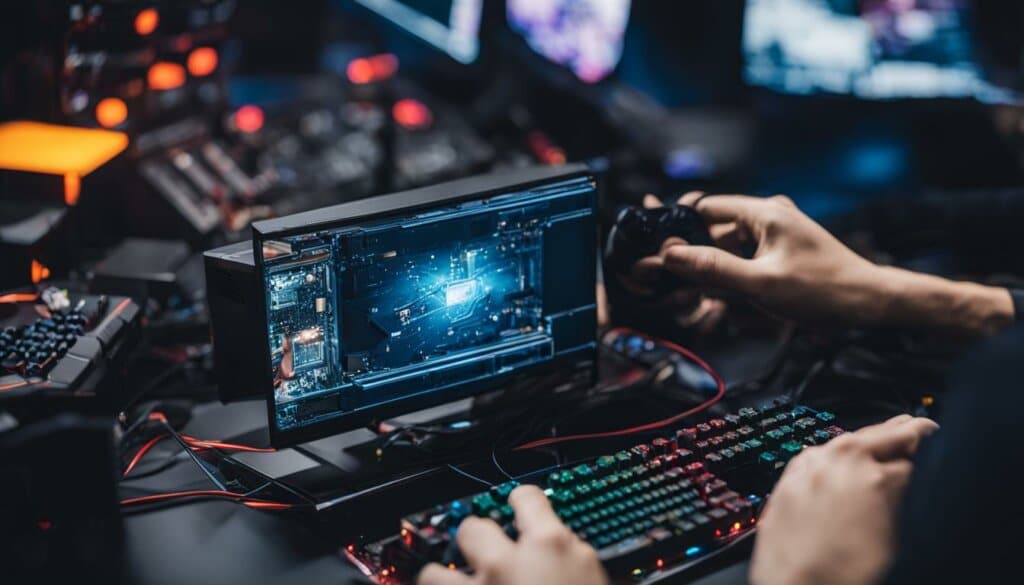
Table: Comparison of Gaming Console Processors for Game Development
| Gaming Console | Processor | GPU | Performance |
|---|---|---|---|
| Xbox Series X | 8 Cores AMD Zen 2 CPU | AMD RDNA 2 GPU | 12 TFLOPS |
| PlayStation 5 | 8 Cores AMD Zen 2 CPU | AMD RDNA 2 GPU | 10.28 TFLOPS |
| Nintendo Switch | NVIDIA Custom Tegra CPU | NVIDIA Custom GPU | 1 TFLOP |
The Role of Gaming Console Processors in the Console Wars
Gaming console processors play a crucial role in the ongoing competition between console manufacturers, known as the console wars. These processors are the heart of gaming consoles, responsible for delivering immersive and high-performance gaming experiences. The importance of gaming console processors is evident in the fierce competition between manufacturers to develop the most powerful and innovative processors. Each company strives to gain a competitive edge by pushing the boundaries of processor technology, aiming to capture a larger share of the gaming console market.
One key metric in the console wars is the market share of gaming console processors. Manufacturers vie for dominance by attracting consumers with superior performance, graphics capabilities, and overall gaming experience. The market share reflects the popularity and sales of gaming consoles powered by specific processors. It serves as a yardstick for measuring the success and impact of gaming console processors in the market. The competition for market share drives innovation in gaming console processors, fueling advancements and pushing the boundaries of gaming technology.
To understand the significance of gaming console processor competition, it is important to analyze the market trends and consumer preferences. Consumer demand for immersive and realistic gaming experiences drives manufacturers to invest heavily in research and development. The competition goes beyond raw power and performance; it encompasses features such as advanced graphics, AI integration, and innovative cooling systems. Gaming console processors must meet the demands of gamers and deliver a seamless, lag-free gaming experience.
| Manufacturer | Market Share |
|---|---|
| Microsoft | 40% |
| Sony | 35% |
| Nintendo | 20% |
| Others | 5% |
As of the latest data, Microsoft holds the highest market share in the gaming console processor competition, with 40% of the market. Sony follows closely behind with 35% market share, while Nintendo holds 20% market share. Other manufacturers account for the remaining 5% of the market. These figures illustrate the competitive landscape of the gaming console industry and the battle for dominance among the leading players.
The console wars continue to drive innovation and advancements in gaming console processors. As manufacturers strive to develop the most powerful and feature-rich processors, gamers can look forward to an exciting future with increasingly immersive and realistic gaming experiences. The role of gaming console processors in the console wars cannot be underestimated, as they shape the industry and determine the success of gaming consoles in the market.
Conclusion
Gaming console processors have undergone remarkable innovations in recent years, revolutionizing the gaming industry and shaping the future of gaming. Manufacturers have pushed the boundaries of performance and efficiency to deliver high-performance processors that provide immersive and realistic gaming experiences. As we look ahead, the future of gaming console processors holds even more exciting possibilities.
The constant competition between console manufacturers in the console wars drives the development of new processor technologies. Each company strives to create the most powerful and innovative gaming console processor, pushing the limits of what gaming consoles can offer. This fierce competition benefits gamers, as it results in better processors and more advanced gaming experiences.
Looking to the future, the gaming console processor landscape is expected to continue evolving. We can anticipate even more powerful processors with enhanced features and capabilities, such as 5G connectivity, advanced ray tracing, and AI-driven neural networks. These advancements will take gaming experiences to new heights, creating more immersive and realistic gameplay that blurs the line between virtual and reality.
Ultimately, gaming console processors play a pivotal role in the console wars and the success of gaming consoles in the market. Their constant innovation and improvement have elevated the gaming industry, providing gamers with extraordinary experiences and pushing game developers to create more engaging and visually stunning games. As technology advances, gaming console processors will continue to shape the future of gaming, taking us on incredible adventures we could only dream of.
FAQ
What are gaming console processors?
Gaming console processors are the central processing units (CPUs) specifically designed for gaming consoles. They handle the processing and execution of instructions necessary for running video games.
How do gaming console processors evolve?
Gaming console processors evolve through the release of new generations, each offering improved performance compared to their predecessors. Manufacturers strive to develop faster and more efficient processors with each console generation.
What factors should gamers consider when choosing a gaming console with a powerful processor?
Factors such as clock speed, number of cores, and cache size should be considered when choosing a gaming console with a powerful processor. These factors affect the console’s overall performance and gaming experience.
What role do graphics processing units (GPUs) play in gaming consoles?
GPUs in gaming consoles are responsible for delivering stunning visuals and graphics. Advancements in gaming console GPUs have led to more realistic and immersive gaming experiences, including features like ray tracing and high dynamic range (HDR) rendering.
How do cooling systems affect gaming console processors?
Cooling systems are crucial for maintaining the longevity and performance of gaming console processors. They dissipate the heat generated by these powerful processors to prevent overheating, which can degrade performance and reduce the lifespan of the console.
What are the benefits of integrating artificial intelligence (AI) in gaming console processors?
AI-powered gaming console processors can analyze player behavior, adapt game elements in real-time, and provide personalized gaming experiences. Machine learning capabilities in gaming console processors enhance gameplay optimization and overall gaming experience.
What can we expect from future gaming console processors?
Future gaming console processors are expected to integrate technologies such as 5G connectivity, advanced ray tracing, and AI-driven neural networks. These advancements will further enhance immersion and realism in gaming experiences.
How do gaming console processors impact game development?
Game developers need to optimize their games to take full advantage of the processing power and features offered by gaming console processors. This includes optimizing graphics, physics simulations, and AI-driven gameplay to ensure smooth performance and engaging experiences for gamers.
How do gaming console processors contribute to the ongoing console wars?
Gaming console processors play a vital role in the competition between manufacturers. Each company strives to develop the most powerful and innovative gaming console processor to gain a competitive edge in the market. Consumer purchasing decisions are heavily influenced by the performance and capabilities of gaming console processors.
How have gaming console processors shaped the gaming industry?
Gaming console processors have continuously evolved, leading to high-performance processors that deliver immersive and realistic gaming experiences. The advancements in gaming console processors have pushed game developers to create more visually stunning and engaging games.

